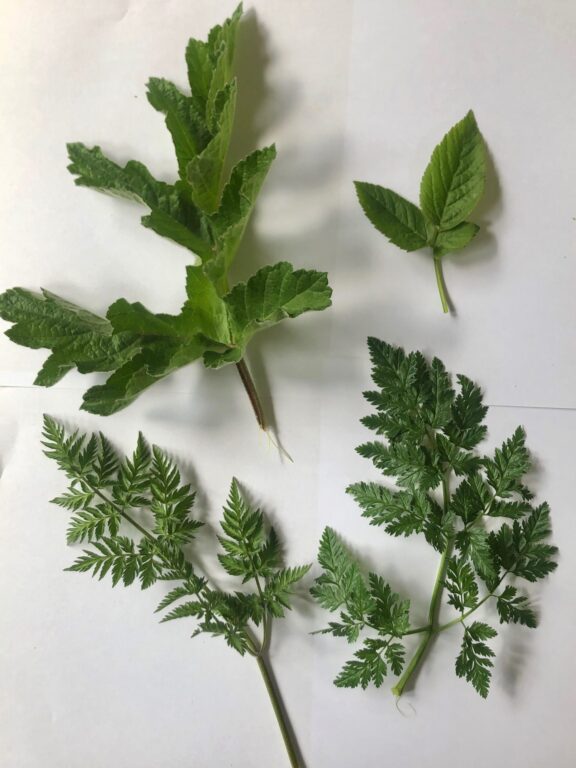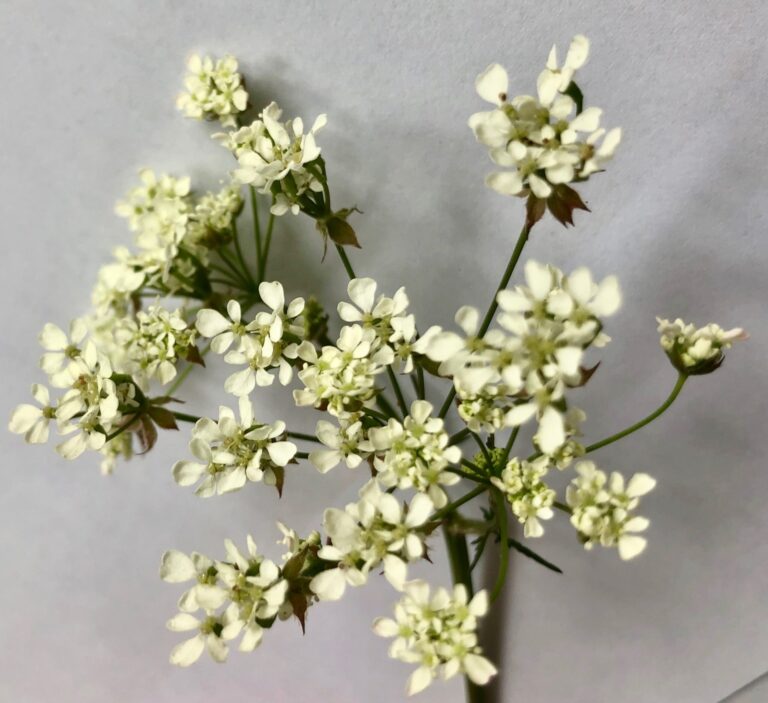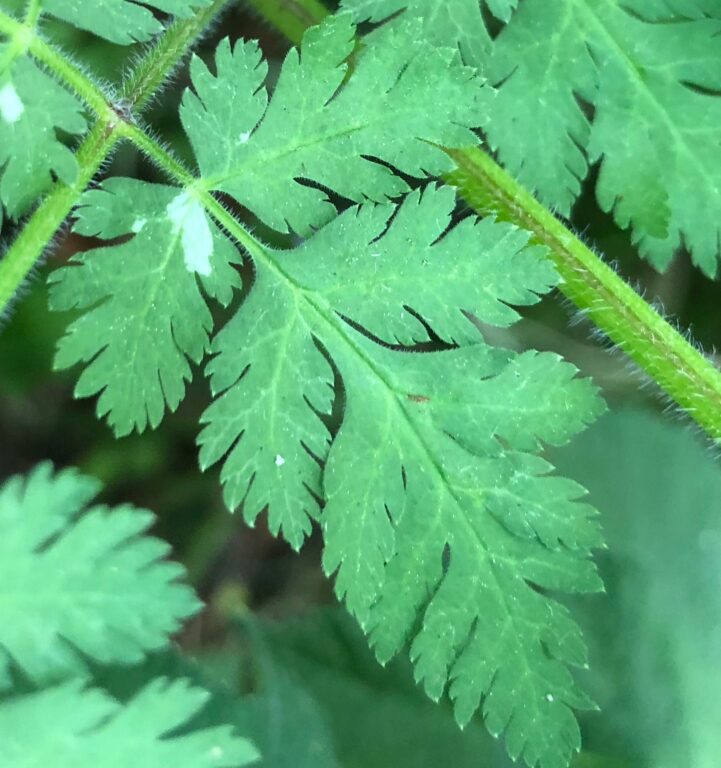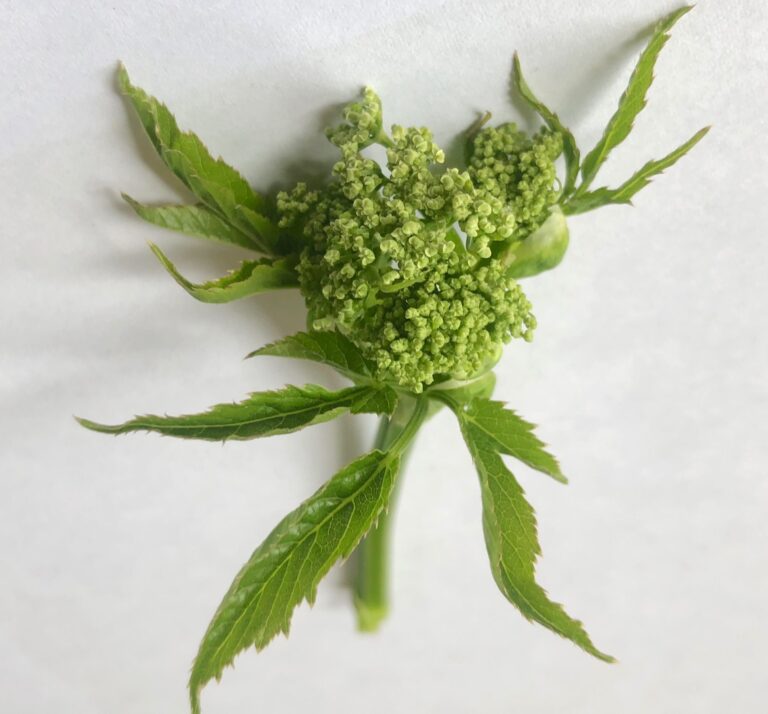Most of us are familiar with cow parsley, a very common roadside and hedgerow plant with large sprays of white flowers that appear in May. But this is a huge family of plants with around 25 members growing in the North East. With a little knowledge and visual and olfactory observation, there are many more species to find in all habitats, including urban.

Cow parsley
This is the default species. It has hollow stems that often have a purplish base and fern-like, often hairy, leaves and simple white umbels. Get to know it well! Whilst it may look superficially attractive, notice its dominance at this time of year. Nitrogenous waste from car exhausts and fertilisers is thought to have led to a 50% increase over the last 20 years on rural road verges, drowning out more delicate plants.

Here are another four to look out for
Sweet Cicely
Sweet Cicely appears in April and can be distinguished by the white blotches found on its rather brighter green, fern-like leaves. Its flowers are more creamy white and when you pick a small piece of leaf it has a beautiful sweet smell of aniseed. Its Latin name Myrrhis odorata reflects its aromatic nature – Myrrh from the aromatic oil and odorata from scented.

Hemlock
Hemlock has vegetation of a darker shade of green and leaves are more divided and the stems have purple blotches. It is usually glabrous (hairless). The leaves have a rank smell which some liken to mice and which seems to me to warn of its toxic nature. Wash hands after touching! The fatal dose from the alkaloid coniine is reported to be about 6-8 leaves but the seeds have more concentrated forms. Death occurs due to neuromuscular blockade, much like the action of the anesthetic agent, curare. Socrates was poisoned by hemlock.
Hogweed
This is a large plant, reaching nearly 2 meters, with much simpler leaves and very large umbels. Like cow parsley, it has hollow stems. It can cause photosenitisation – exposure of the skin to the plant when weeding can lead to a rash when the skin is exposed to sunlight. Hogweed is vital for many insects, including hoverflies and bees, as its flowers are so rich in pollen and nectar.
Ground Elder
This may be most familiar as a dreaded garden weed but is also a member of the Apiaceae. It has simple leaves and pale yellowish-green flowers initially, becoming white later. Unlike the other featured species, it is a creeping plant, propagating via its rhizomes. This is what makes it so hard to eradicate in the garden – leaving the tiniest part of a rhizome enables it to recur. I have found that the only method to eradicate it is to pick off every single leaf as soon as it appears in the spring – and do this for about 5 years!

Keep looking – other widespread species include Rough Chervil (similar to cow parsley but with solid stems), Upright Hedge Parsley and Wild Carrot.
By Mark Welfare, Local Naturalist
About the Author
I am a generalist naturalist, starting as a birder but branching out now. I am a semi-retired doctor with three kids and love to be out in the field for any reason. I live in Morpeth and during recent months I have been concentrating my observations along the Wansbeck valley.